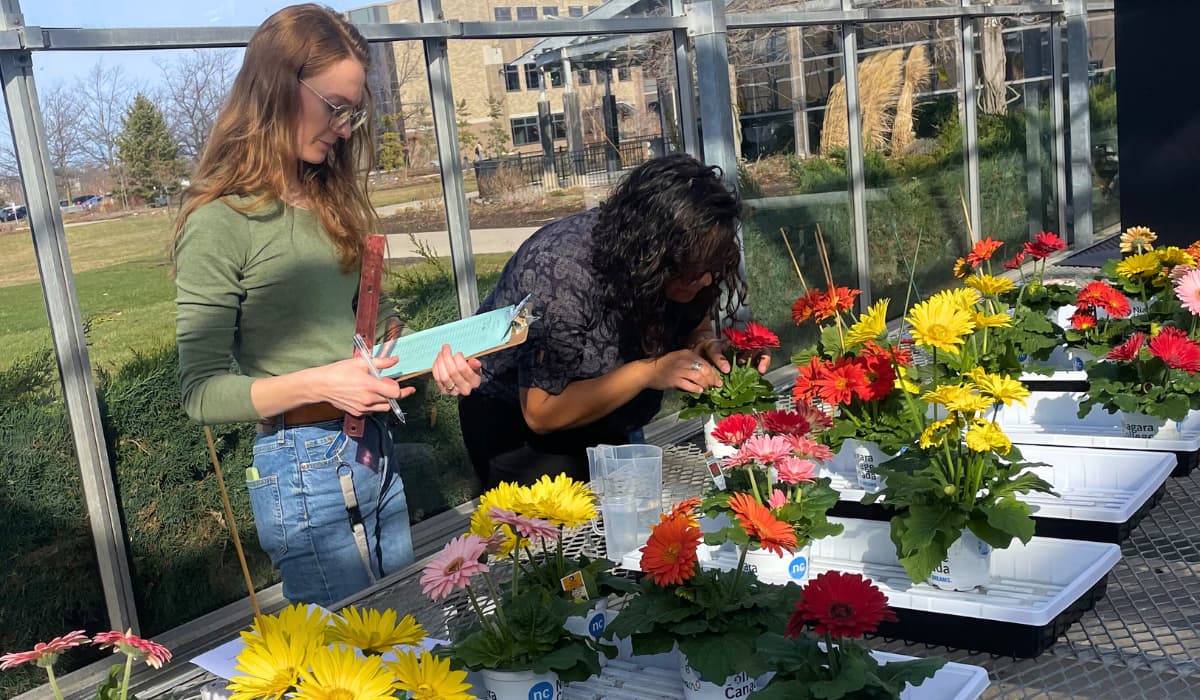Evaluation of biochar-amended media on fertilization requirements and growth of basil and gerbera in greenhouses
OBJECTIVE
To determine the effects of a biochar soilless media amendment on the health and growth of a low fertility-demanding (basil) and a medium-demanding fertility (gerbera) crop.
CHALLENGE
The Environmental Division of Walker Industries (Walker) has over 40 years of experience providing critical services and infrastructure for communities to recover resources, manage waste and contribute to a circular economy. Walker has an interest in technology known as pyrolysis for the conversion of wood fiber feedstock into solid biochar (similar to charcoal) and renewable gases. The pyrolysis technology utilizes a kiln specifically designed to heat feedstocks to temperatures up to 900°C in an oxygen-free environment. The resulting biochar has been shown to benefit the growth of plants when added to soils or horticultural growing media. The high cation exchange capacity (CEC) imparted through biochar can be a powerful asset in preventing excess nutrient leaching and loss from greenhouse and nursery growing systems. Biochar has the potential to play a role in assisting greenhouse managers as they move to reduce their crop nutrient requirements and eventual nutrient leach into the environment.
In a previous study carried out between the Horticultural and Environmental Sciences Innovation Centre (HESIC) team at Niagara College (NC) and Walker, the impact on the chemistry of greenhouse media with different blend rates of biochar was examined. In that study, an excess rate of biochar was established, which had resulted in high media pH. In the same study, it was observed that the overall size of biochar particle was too high for greenhouse production, potentially reducing the effectiveness of the biochar.
SOLUTION
Building on results from the previous study with Walker, the next step is to determine, through a growth trial using two different crops, the overall impact that the incorporation of biochar has into greenhouse media, at 1 inch and smaller particle size, on health of the crops. A research trial was conducted with the HESIC team used Walker’s biochar product as a media amendment at volumes of 0% (control), 10%, and 20% in containers to grow basil (Ocimum basilicum) and gerbera (Gerbera jamesonii ‘Flori Line® Midi’) crops.
The addition of biochar to greenhouse potting media appeared to act as a biostimulant, positively influencing both basil and gerbera plant growth. Of the two treatments with biochar incorporated into the media, the 10% treatment produced basil that were taller and gave the highest total amount of plant biomass, while the 20% biochar produced the highest amount of gerbera biomass. The incorporation of biochar increased the media pH from 4.9 in the control to 5.3 in the 10%, and 6.0 in the 20% blends. This higher pH trend in the biochar-amended media was maintained throughout the growth periods of both crops. The biochar-amended media demonstrated higher nutrient-holding capacity than the control, as they leached fewer nutrients over the course of the growth trial period, while also holding more phosphate, calcium, and potassium in the media blend with increasing rates of biochar.
Funding: This project was made possible by funding from the Federal Economic Development Agency for Southern Ontario (Fed Dev), through the Niagara College-led Greenhouse Technology Network.




